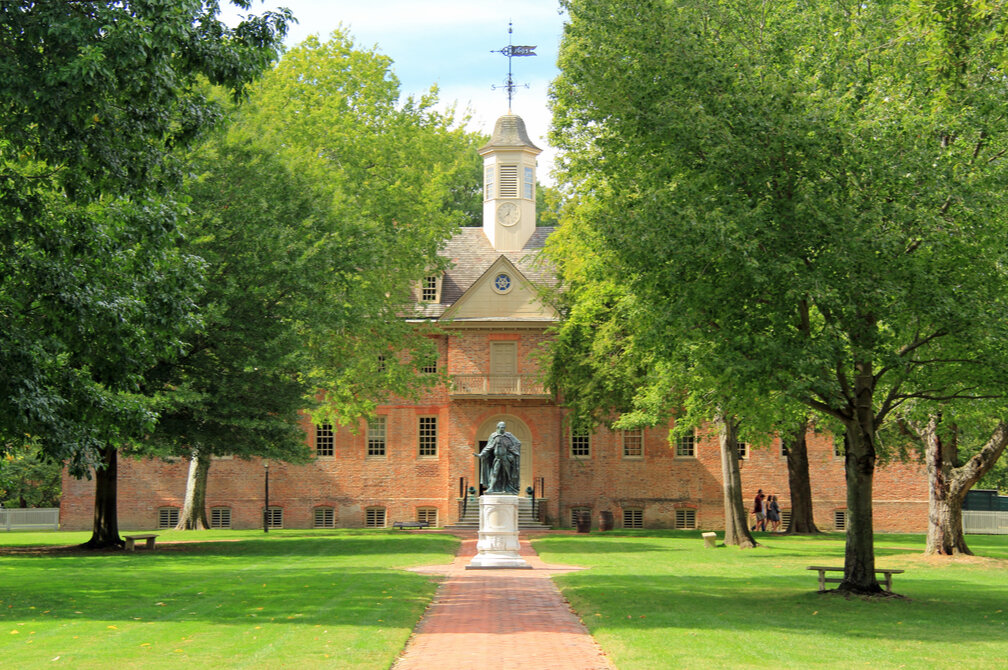In the Latest Big Campus Environmental Gift, a Push to Cross Boundaries
/William & Mary in Williamsburg, VA. William Silver/shutterstock
State support for higher education still drags behind historical levels despite some gains in recent years, and many universities continue to run ambitious fundraising campaigns. Charitable giving to colleges and universities continued its climb during the 2018-2019 fiscal year when these institutions raised more than $49.6 billion in the 10th straight annual increase.
Donations that support environmental programs constitute an increasingly active branch of higher ed funding. We’ve seen individual donors, foundations and crowdfunding campaigns support diverse Earth-friendly university programs focused on conservation, energy efficiency and other subjects. Some givers are driven by climate change concerns, some by nostalgia for a certain school or corner of nature—often, it’s a combination of factors. Families deep in oil and plastic have even made gifts of this ilk in recent years, including a standout $750 million donation in October 2019 to Caltech for climate research and other projects from California agricultural moguls and the owners of Fiji Water, Lynda and Stewart Resnick.
Then, in December 2019, an anonymous alumna made a $19.3 million gift to William & Mary in Virginia to establish an Institute for Integrative Conservation (IIC). Integrative conservation takes human, economic and ecological factors into account. This money is part of the school’s $1 billion “For the Bold” campaign, which concludes in 2020. In late 2019, William & Mary had raised more than $920 million. In 2018, state-provided per-student funding for Virginia’s public colleges and universities was 17% below 2008 levels after adjusting for inflation, according to a Center on Budget and Policy Priorities analysis.
A Multidisciplinary Center with Big Goals
The new conservation program will be interdisciplinary and collaborative, launching partnerships between all five of the university’s schools—arts and sciences, law, business, education and the Virginia Institute of Marine Science. The plan is for the schools to participate in shared research. Biology Professor John Swaddle, who helped steer the establishment of the center, says it will link business, fundraising, entrepreneurship, communications and indigenous studies with more traditional conservation areas. This multifaceted, holistic approach is reminiscent of a 2015 donation to the University of Dayton, which sought to create a new sustainability institute while weaving environmental education throughout the school’s curriculum. Swaddle says the IIC’s plan can “help expand what is meant by a conservation professional” in fields like finance, marketing or insurance.
The IIC will also convene and hire national and international experts from the public, private and nonprofit sectors. Agreements with the Rainforest Trust, National Geographic Society, Conservation International and Wildlife Conservation Society are in place. The anonymous alumna donor, who serves on the William & Mary Foundation board of trustees, tells Inside Philanthropy that projects with external partners are set to begin in the spring of 2020.
The school advertised the endeavor as “the nation’s premier cross-disciplinary institute in this critical field.” In this light, the gift mirrors others that seek to establish elite centers of expertise at schools that aren’t located in major population centers. On the other hand, as the alumna pointed out in a statement, William & Mary is only about a three-hour drive from the nation’s capital, which can ease coordination with leading conservation organizations. The school is also about an hour away from the coast of Virginia and Old Dominion University, where climate change resilience is a big concern that recently drew a local funder’s attention. Sea-level rise and coastal stability are among the potential focuses for the IIC, along with biodiversity threats, human-wildlife conflict and others.
“In many ways, this institute is novel, with the combination of its cross-disciplinary approach and external-internal partnership model,” the anonymous alumna says. She thinks more donors should invest in environmental programs at higher education institutions, “and they should invest in William & Mary.”
A Focus on Academic Diversity and Indigenous Communities
The IIC will also offer internships and international scholarships. Along with integrating and relying on varied academic specialties, it seeks to build and draw from student, staff and faculty diversity. William & Mary President Katherine A. Rowe said diversity “accelerates problem-solving.”
The alumna says it’s important to grow a talent pipeline by “drawing underrepresented, international and indigenous students and women” into the conservation field.
Making the student body more heterogeneous was also a central goal of a 2019 gift to Duke University’s Nicholas School of the Environment. As we’ve reported, research shows that both green groups and their funders remain predominantly white-staffed and -run.
The IIC’s programming will include a focus on the well-being of indigenous peoples in relation to the environment, as well. Indigenous communities play an active role in environmental stewardship around the globe. As we’ve covered, funding levels for these communities in the U.S. remain low. The university already has connections with Virginia tribes, who will be involved in some of its programs. Swaddle says, “The success of conservation projects is very often tied to the values and well-being of the people who live in that locality. [These] things are intimately interconnected.” By evolving from local to global over time, the IIC aims to prepare international students to participate in conservation that can benefit native populations in their home countries.
Director of the Center for Geospatial Analysis Robert Rose, who also helped frame the institute, said it is a “game-changer” for the school’s global conservation and sustainability efforts.
The IIC is indeed an ambitious undertaking, seeking to cross borders between disciplines, public and private sectors, and nations, with a goal to diversify and invigorate the conservation field. As steering committees and working groups begin to form, Swaddle is excited but also “mildly” terrified—to use his word, “excitrified.”
The launch of the IIC was announced at the same time as William & Mary’s commitment to achieve carbon neutrality by 2030. Another Virginia school, the University of Virginia (UVA), also took this pledge.



















